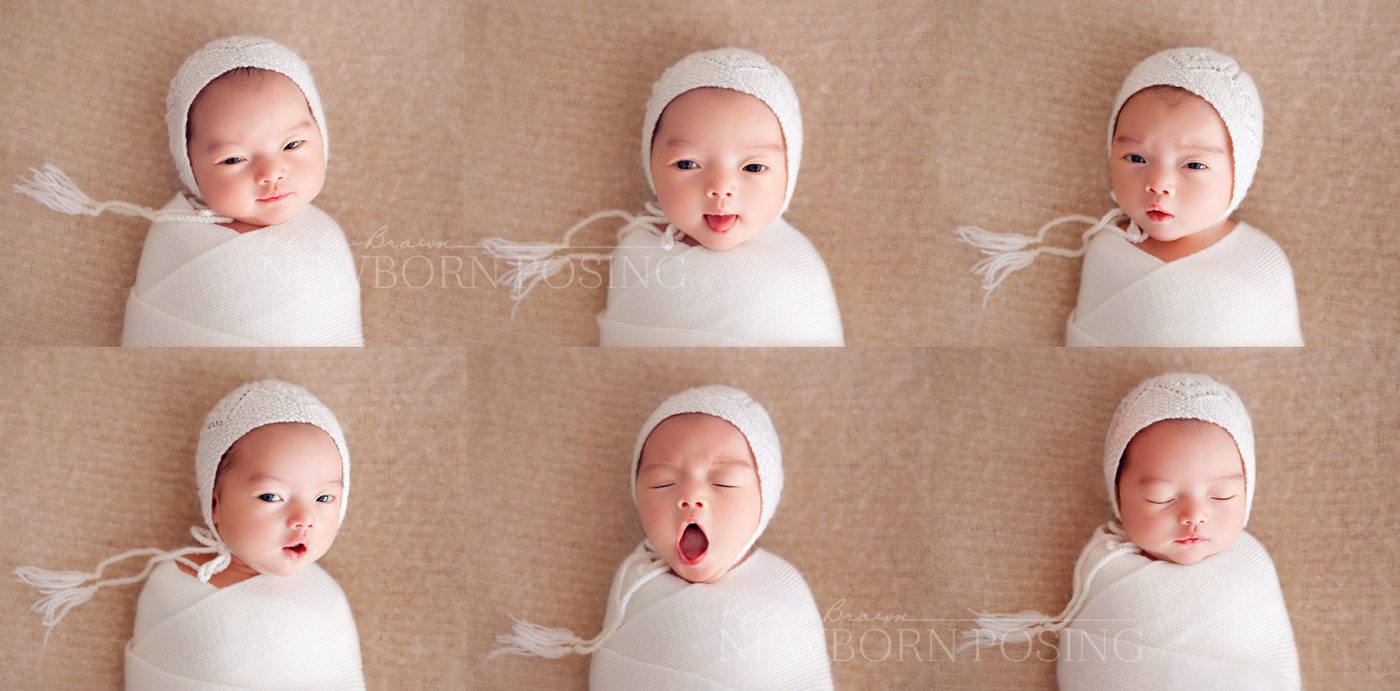As photographers, it’s our job to understand newborn behaviour..
All babies are born with very different behavioural styles or temperaments. Some are more relaxed and easy-going; others appear more intense and dramatic. Some seem to move constantly, others are more relaxed. And some are happy most of the time, while others can be more serious.
As photographers, it’s our job to know how to work with them, to understand their newborn behaviour regardless of whether they are awake, unsettled or sleepy during a newborn photography session so that we can fulfil our clients’ needs.
Here’s a few things I’ve learnt about newborn behaviour over the years and what I believe we need to know…

WHY DO BABIES CRY?
Younger babies cry because of their temperament, sleep cycles and feeding patterns. It’s their way of communicating – of telling you what they need. Babies will cry and fuss on average for almost three hours a day (and some for longer), studies show. Most of this crying and fussing seems to take place in the late afternoon and evening, although it can vary. Additionally, babies will also cry when in pain or if they have discomfort.
If you’re posing/positioning the baby and they suddenly start crying as a reaction then they are likely telling you they are in pain and/or not comfortable.
NEWBORN SLEEP
Newborn babies will usually sleep for around 16 hours in every 24. They sleep in short bursts throughout the day and night, in blocks of up to four hours.
When newborns are awake, they’re usually feeding. Playtime at this age is very short. After feeding, the baby will probably want to go back to sleep. Their sleep pattern consists of a cycle of deep sleep and light sleep. Then they wake up for a little while. During this time, they might grizzle, groan or cry. They might also fidget and squirm going from deep to light sleep, and back again.
A newborn sleep cycle takes about 40 minutes. If they wake after 40 minutes, you might need to help them settle for the next sleep cycle. Babies become overtired if they’ve been awake for more than 1-2 hours.
Their tired signs might be or a combination of:
- pulling at ears,
- closing fists,
- jerking arms,
- leg movements,
- yawning and arching backwards,
- sucking on fingers – this could be a good sign and might mean that the baby is trying to find ways to settle to sleep.

READING THEIR BODY LANGUAGE
When I first handle a baby I place them in my lap with soft hands and watch how they respond to my touch. They will use body language to tell you what they want.
Watching what the baby does and how they respond to what you do will help you understand the baby’s body language.
OVERSTIMULATION
This happens when a child is swamped by more experiences, sensations, noise and activity than they can cope with. For example, they might get very unsettled after a visit by lots of family members where they have been continually passed around for lots of cuddles.
Overstimulated newborns will be cranky or tired, which might make them cry more. Their movements might become jerky, with clenched fists and waving arms or kicking.
If a baby is overstimulated and overwhelmed, create a calm environment with little movement and sound. Sometimes just leaving them to settle into that sleep pattern is all they need.
COLIC
Some babies suffer long bouts of unexplainable crying, commonly called colic.
Some people believe colic is because of stomach pain caused by wind. Some doctors now think it is simply natural behaviour for some babies, especially at the end of a long day, caused by too much stimulation. Reducing stimulation around the baby will help. This might help to soothe them. Try gentle patting or rocking.
*Disclaimer
The information in this document is the result of my own personal research. At no point should this be taken as medical advice. As a service provider, I believe it is our responsibility to study our chosen field to best support our client’s needs. If you have any further concerns I highly recommend seeking professional advice from a specialist in your area.

Watch my FREE Newborn Posing Safety Videos
Other Reading:
Newborn behaviour: an overview

